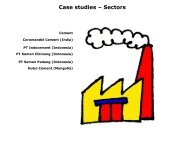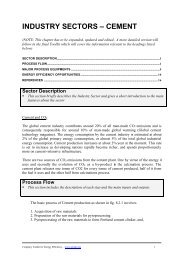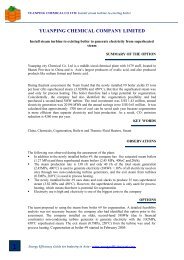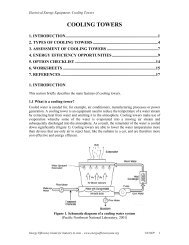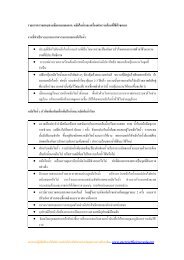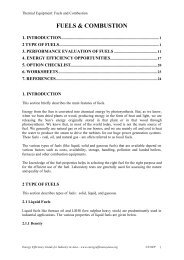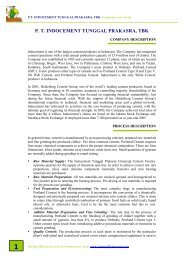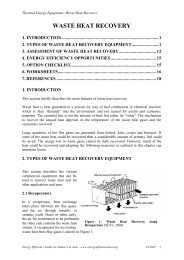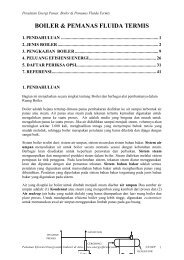English - Energy Efficiency Guide for Industry in Asia!
English - Energy Efficiency Guide for Industry in Asia!
English - Energy Efficiency Guide for Industry in Asia!
- No tags were found...
You also want an ePaper? Increase the reach of your titles
YUMPU automatically turns print PDFs into web optimized ePapers that Google loves.
Each of these chapters follows the same structure as the thermal energy equipment chapters:• What is the equipment• Types of the equipment• Assessment of the equipment• <strong>Energy</strong> efficiency opportunities• Option checklist• Worksheets and other tools• ReferencesAn example of what <strong>in</strong><strong>for</strong>mation is <strong>in</strong>cluded under each head<strong>in</strong>g is given <strong>for</strong> the “Boilers & thermicfluid heaters” Part 4 on page 45.Thermal energy equipmentBe<strong>for</strong>e different types of thermal energy equipment are described, the first chapter “Fuels & combustion”gives the basics of fuels (oil, gas and coal) and combustion processes.Next, chapters are <strong>in</strong>cluded <strong>for</strong> different thermal energy equipments:• Boilers and thermic fluid heaters• Steam distribution and utilization• Furnaces and refractories• Waste heat recovery• CogenerationEach of these chapters (<strong>in</strong>clud<strong>in</strong>g the Fuels & combustion chapter) follows the same structure:• What is the equipment• Types of the equipment• Assessment of the equipment• <strong>Energy</strong> efficiency opportunities• Option checklist• Worksheets and other tools• ReferencesAn example of what <strong>in</strong><strong>for</strong>mation is <strong>in</strong>cluded under each head<strong>in</strong>g is given <strong>for</strong> the “Boilers & thermicfluid heaters” Part 4 on page 45..Part 4<strong>Energy</strong> EquipmentMonitor<strong>in</strong>g equipmentMonitor<strong>in</strong>g equipment can be useful to measure the actual operat<strong>in</strong>g parameters of various energyequipment and compare them with the design parameters to determ<strong>in</strong>e if energy efficiency can beimproved. Or monitor<strong>in</strong>g equipment can be used to identify measure steam or compressed air leaks.Parameters that are often monitored dur<strong>in</strong>g an energy assessment are:• Basic electrical parameters <strong>in</strong> AC & DC systems: voltage (V), current (I), power factor,active power (kW), maximum demand (kVA), reactive power (kVAr), energy consumption (kWh),frequency (Hz), harmonics, etc.• Other non-electrical parameters: temperature and heat flow, radiation, air and gas flow, liquid flow,revolutions per m<strong>in</strong>ute (RPM), air velocity, noise and vibration, dust concentration, total dissolvedsolids (TDS), pH, moisture content, relative humidity, flue gas analysis (CO 2, O 2, CO, SO x, NO x),combustion efficiency, etc.The CD-ROM and website of the <strong>Guide</strong> provide <strong>in</strong><strong>for</strong>mation <strong>for</strong> various monitor<strong>in</strong>g equipment that areoften used dur<strong>in</strong>g energy assessments <strong>in</strong> <strong>in</strong>dustry:• Electrical measur<strong>in</strong>g <strong>in</strong>struments• Combustion analyzers44<strong>Energy</strong> <strong>Efficiency</strong> <strong>Guide</strong> <strong>for</strong> <strong>Industry</strong> <strong>in</strong> <strong>Asia</strong>



